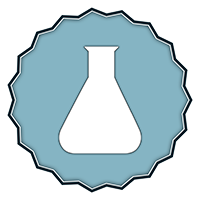The hell like conditions of combat has a wide range of both physical and psychological effects on even the most prepared soldier. Today’s accepted symptoms of Post-Trauma Stress Disorder were first described by a doctor during the Civil War. Shell shock was a term introduced in the First World War to describe the trauma experienced after intense bombing. Soldiers reported feeling a sense of helplessness expressed variously as panic, or flight, an inability to reason, sleep, walk or talk.
By: John Giordano DHL, MAC
Former President and Co-Founder of:
G & G Holistic Addiction Treatment Center
The British reported medical symptoms after combat, including tinnitus, amnesia, headache, dizziness, tremor, and hypersensitivity to noise – symptoms normally associated with a brain injury, but the soldiers had no head wounds.
Although PTSD is synonymous with war veterans, psychologists are coming around to an understanding that I’ve known for quite some time. I’ve counseled wounded warriors and law enforcement involved in shootings. Very early in my counseling career I saw the signs of PTSD in people who had experienced an extreme traumatic event. What I’d found is that PTSD is not reserved solely for law enforcement and our wounded warriors. Trauma comes from many sources, such as the loss of a loved one, or a serious accident. It colors the way people look at the world and view their own life.
There were no prescribed therapies for PTSD when I first started counseling, leaving me to develop one that addressed the specific needs of the peoples suffering from this anxiety disorder. I tried a lot of therapies and found a few that showed great promise and better results than others. However, the real break-through came when I began combining individual therapies into one. The psychotherapy I’ve been developing for decades is called, Trauma Release Technique (TRT) and it has shown profound changes in the people I’ve counseled.
Trauma Release Technique (TRT) is a highly effective cutting-edge psychotherapy designed specifically to eliminate the painful symptoms of PTSD and other traumas. TRT integrates the core rudiments of several evidenced-based, scientifically-proven to be successful therapies into one powerful technique. By fusing these dynamic principles together, the result of the treatment becomes exponential; TRT therapy is greater than the sum of its parts. It has shown far better outcomes in the people I’ve counseled compared to the individual therapies administered on their own. The four pillars of the Trauma Release Technique are: Eye Movement Desensitization and Reprocessing (EMDR), Hypnotherapy, Neuro-linguistic programming (NLP) and Karate/Yoga breathing techniques.
Albeit EMDR is not a quite household term yet, but ‘Eye Movement Desensitization and Reprocessing’ has been scientifically proven to be an effective psychotherapy for eliminating the symptoms of trauma. EMDR provides the foundation for the Trauma Release Technique. It was discovered by Francine Shapiro, PhD, a psychologist who found that moving her eyes in a pattern relieved her negative thoughts and memories. She tested her theory on volunteers and perfected a procedure for maximum therapeutic outcomes. The International Society of Stress Studies practice guidelines categorized EMDR as an evidence-based level A treatment for PTSD in adults. The Department of Defense and the American Psychiatric Association have endorsed EMDR – recommending it as an effective trauma therapy.
Hypnotherapy was first recognized as therapeutic agent frequently effective in relieving pain, procuring sleep, and alleviating many functional ailments such as psycho-somatic complaints and anxiety disorders in 1892 by the British Medical Association (BMA). In 2001, the Professional Affairs Board of the British Psychological Society (BPS) reported: “Enough studies have now accumulated to suggest that the inclusion of hypnotic procedures may be beneficial in the management and treatment of a wide range of conditions and problems encountered in the practice of medicine, psychiatry and psychotherapy.” People who have been in a hypnotic state claim they were able to achieve intense focus and concentration with the ability to concentrate solely on a specific thought or memory without distraction and/or interruption. Hypnotherapy has become so mainstream that the Duchess of Cambridge, Kate Middleton, is strongly considering ‘hypno-birthing’ as a natural option for pain management and alleviating the anxiety and fear of labor.
Although there hasn’t been enough scientific research to thoroughly prove the efficacy of Neuro-linguistic programming (NLP), the therapy has shown great promise. The root concept that led to the development of NLP is that there is a connection between the neurological processes, language and behavioral patterns learned through an experience. NLP suggests that this relationship can be changed to achieve specific goals through a systematic realignment of language. It deals with brain networks associated with language and the impact of language on beliefs, feelings, and behaviors.
Despite the lack of empirical data, NLP is being used with great results by self-help practitioners and psychotherapist worldwide.
I was very fortunate to learn ancient breathing techniques at a very early age. These methods were passed down from master to master for thousands of years. They came in very handy while I was training for National Karate Tournaments. The technique I teach is a combination of Karate and Yoga disciplines designed to hyper-oxygenate the blood and eventually the brain. This method has shown great promise in sharpening mental acuities and cognitive function.
The hallmark symptom of PTSD is the re-experience of a past trauma in the form of recollections, dreams and flashbacks. Our brain records memories much like a digital recording device such as camcorder or cell phone, only with much broader detail. It can embed emotions into the image or video in our developing memories similar to a video recording sight and sound. The emotion and image bond together, forming a single entity memory. In addition, every new experience – both good and bad – stored in memory changes how our brain works. This is an essential dynamic for our own growth and development.
The re-experiences a person with PTSD endures are triggered by a cue similar to something encountered during a traumatic event. For example: an Iraq veteran once ducked and ran for cover at the sound of a truck backfiring because the sound is so close to his memory of what gunfire sounded like; thus triggering his survival response. His mind was – at least for an instant and quite possibly longer – transported back to a day he was on the battlefield. He actually felt the weight of his backpack, the fatigue in his legs and the sweat on his brow. He saw the muzzle flashes from enemy fire and smelled the burnt gun powder in the air as he stood on a sidewalk in downtown Miami in the middle of a hot afternoon. At the moment of the truck backfiring, his memory of a past event became his current reality. It was as real to this veteran as real gets; he was literally living in a past event.
Post-Trauma Stress Disorder is an anxiety disorder that, comparatively, we know very little about. The term, ‘Post Traumatic Stress Disorder,’ was coined in 1980. Research on the disorder didn’t begin in earnest until the mid 80s; however what we’ve learned is significant.
Recently I collaborated with my close friend and colleague Dr. Kenneth Blum – discoverer of the reward (alcohol/addiction) gene (DRD2-A1) – and other renowned doctors and scientists on a PTSD research project. The results can be found online at the U.S. Department of Health & Human Services / National Institutes of Health (NIH) / National Center for Biotechnology Information (URL below). Our study reviewed data on veteran and active duty soldiers who were in combat in Viet Nam, Persian Gulf War, Iraq and Afghanistan War to determine if there is the potential of a genetic predisposition to PTSD.
We reviewed one study of Army soldiers screened up to four months after returning from deployment to Iraq that showed 27% met criteria for alcohol abuse and were at increased risk for related harmful behaviors (e.g., drinking and driving, using illicit drugs)
The consensus of the literature we reviewed suggests that interactions between different genes (e.g. DRD2 and DAT1 genes) and between them and the environment make certain people vulnerable to developing PTSD. A process of determining the best role for soldiers could easily be administered by incorporating genotype testing such as Genetic Addiction Risk Score (GARS). This simple test would show a genetic predisposition to PTSD.
Based on what we had found, Dr. Blum and I believe PTSD victims could benefit greatly from two scientifically proven nutraceuticals we’d developed independent of each other. We tested the nutraceuticals on addicts in recovery using qEEG (a digital imaging system much like an MRI that shows changes in brain activity in varying colors) imaging to produce accurate visual results. After administering one oral dose of Dr. Blum’s formulation, Synaptose™ to the volunteer, the image showed the brain turn bright red where it was once as black as night. Similar tests showed my formulation, Mental Clarity’s ability to improve cognitive function and repair. Additional testing of addicts who have been administered Synaptose™ claim that the nearly insatiable drug cravings felt less severe; while the addicts who were administered Mental Clarity stated they felt less foggy, more energy and were more engaged in their daily routines. The results of these tests were published in Post Grad Medical Journal, a peer reviewed medical publication.
With all of this information at hand, I felt compelled to share it with someone in authority who could influence a positive change for our wounded warriors with PTSD. In May (2013) I visited Camp Lajeune, the Marine training facility in Jacksonville, North Carolina. There I meet with their top psychologists and medical personal. I demonstrated the Trauma Release Technique on an unnamed Special Forces member, and a member of their staff. Each one responded positively to the treatment. The staff recognized the efficacy of the Trauma Release Technique and requested training manuals and a follow meeting in the near future. I enthusiastically look forward to helping our men and women in uniform overcome this potentially life threatening disorder.
Post-Trauma Stress Disorder is a silent killer that is on the rise. Its horrifying effects are forcing people into the margins of our society, stopping them from living a full, productive and happy life. PTSD is directly responsible for some alcohol and drug abuse and thought to be partly responsible for the dramatic increase in suicides. The condition is manageable – the bad feeling and emotions can be eliminated. If you suspect that you or someone you know might be suffering from PTSD, please feel free to call me directly at (786) 271-5732 for any questions you may have.
Diagnosis and Healing In Veterans Suspected of Suffering from Post-Traumatic Stress Disorder (PTSD) Using Reward Gene Testing and Reward Circuitry Natural Dopaminergic Activation.
http://www.ncbi.nlm.nih.gov/pubmed/23264885
.


